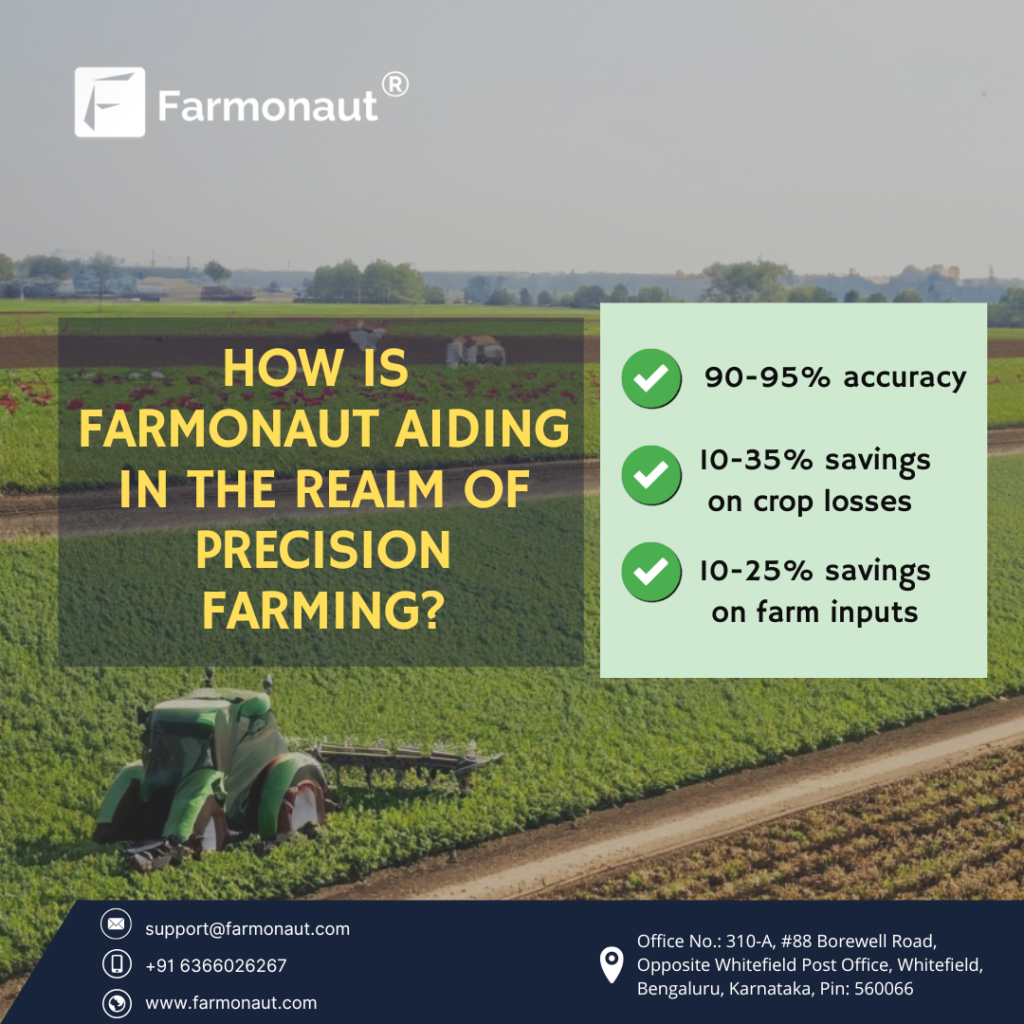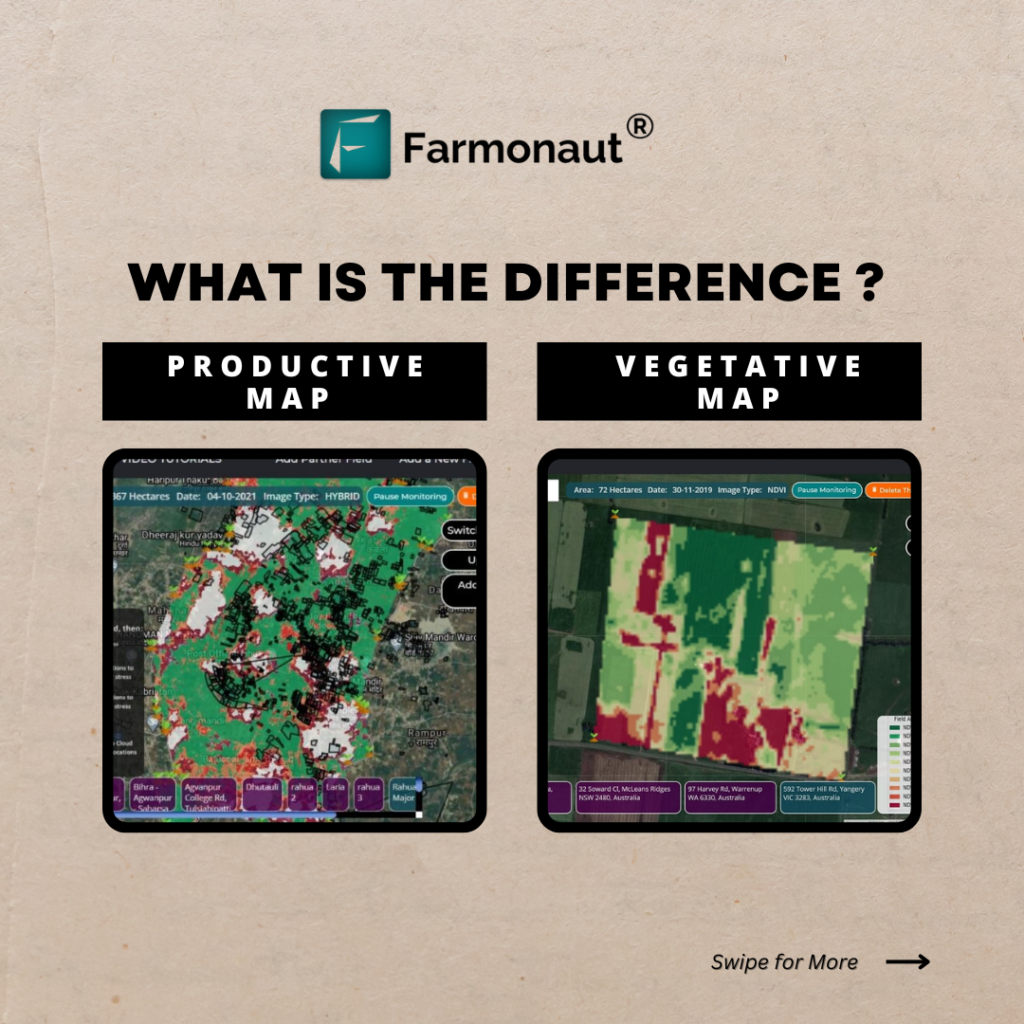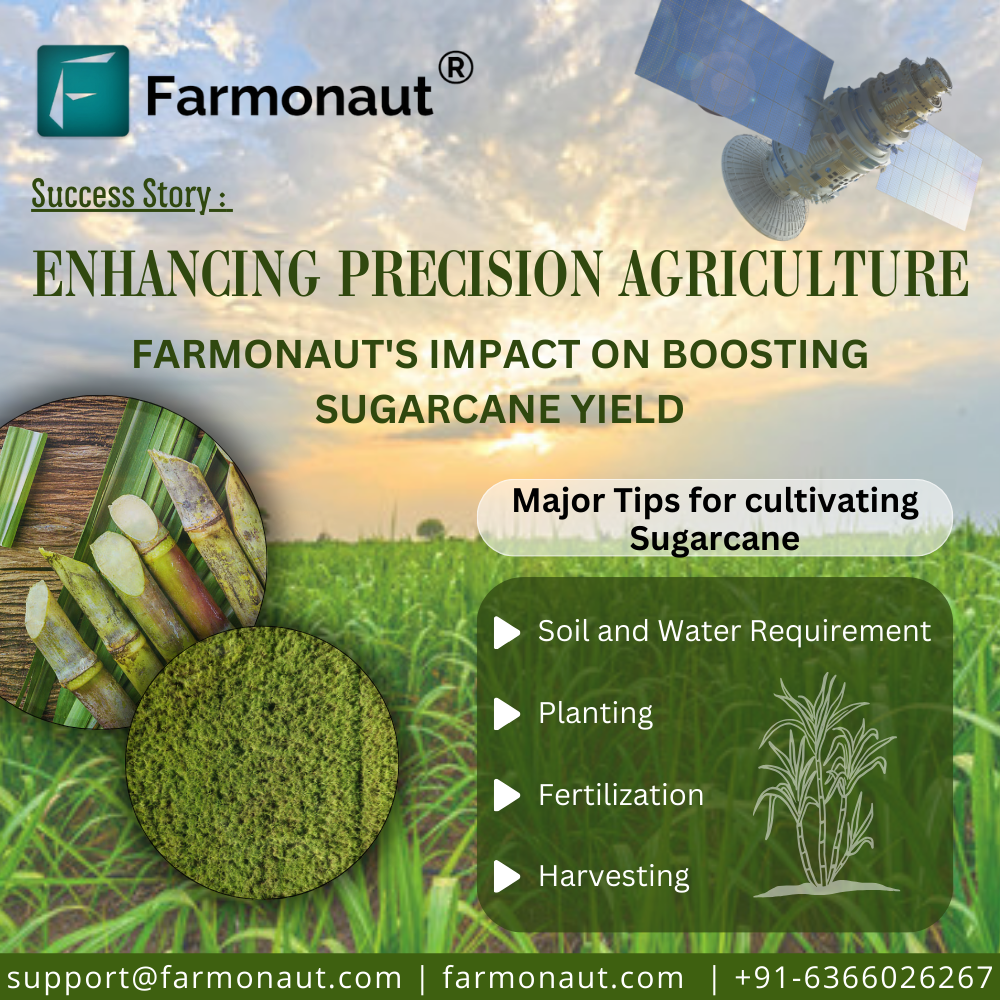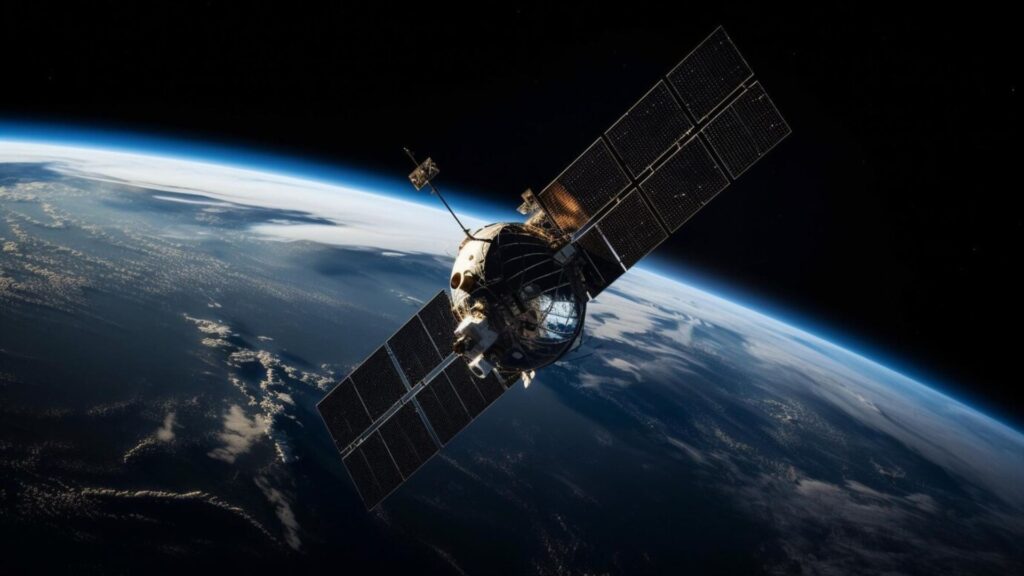Precision Agriculture: Revolutionizing Farming with Data-Driven Insights and Smart Technology
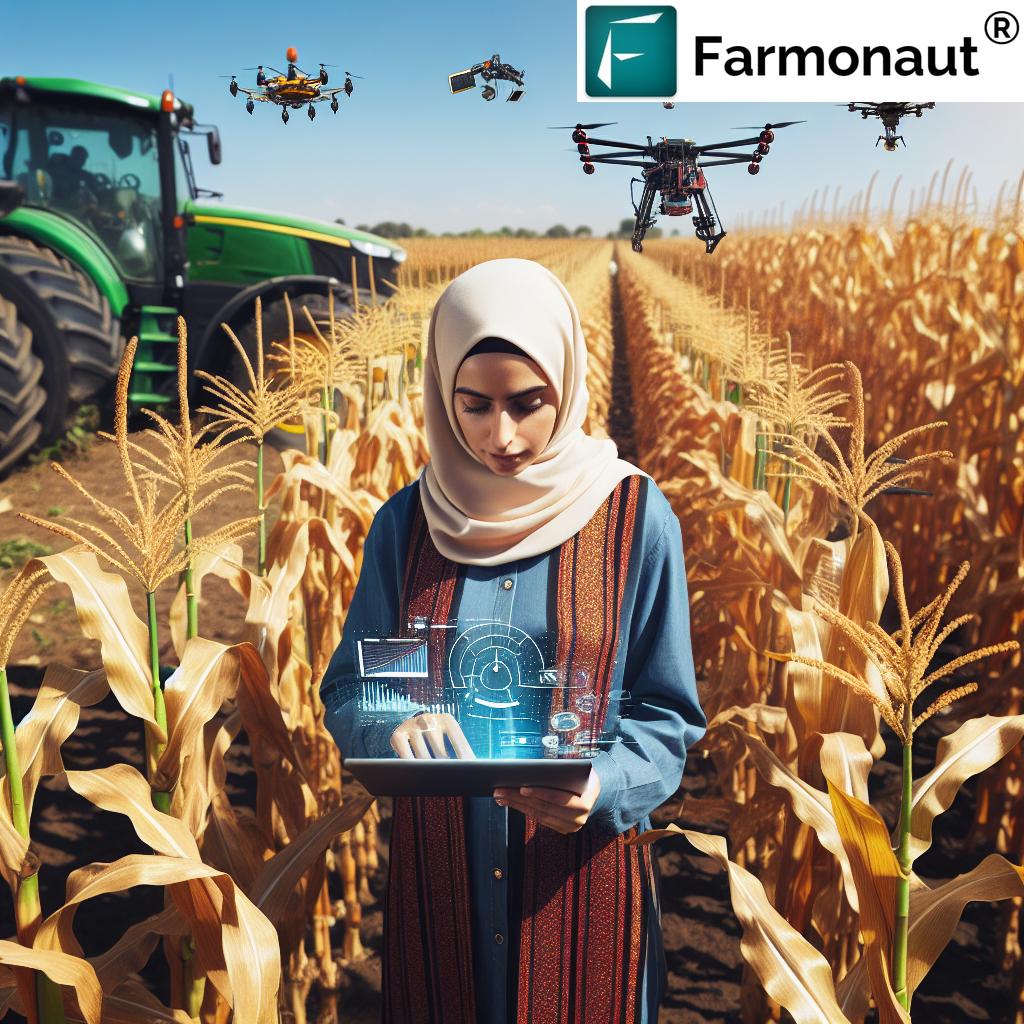
In today’s rapidly evolving agricultural landscape, we find ourselves at the forefront of a technological revolution that is transforming the way we approach farming. Precision agriculture, powered by cutting-edge technology and data-driven insights, is reshaping the future of food production. As we delve into this exciting realm, we’ll explore how innovative tools and techniques are optimizing farm performance, increasing yields, and promoting sustainable practices.
The Evolution of Farming: From Traditional to Precision Agriculture
Agriculture has come a long way since its humble beginnings. From manual labor to mechanization, and now to the era of smart farming, the industry has continuously adapted to meet the growing demands of a burgeoning global population. Today, we stand at the precipice of a new agricultural paradigm, where data, technology, and connectivity converge to create unprecedented opportunities for farmers and agronomists alike.
Precision agriculture represents a significant leap forward in farming practices. By leveraging advanced technologies such as GPS, remote sensing, and data analytics, we can now make informed decisions about every aspect of crop production. This data-driven approach allows us to optimize inputs, maximize yields, and minimize environmental impact – all while improving overall farm management and profitability.
Key Components of Precision Agriculture
To fully grasp the potential of precision agriculture, it’s essential to understand its core components and how they work together to revolutionize farming practices:
- Data Collection and Analysis
- GPS and Mapping Technologies
- Variable Rate Technology (VRT)
- Remote Sensing and Imagery
- Farm Management Software
1. Data Collection and Analysis
At the heart of precision agriculture lies the power of data. We now have access to an unprecedented amount of information about our fields, crops, and environmental conditions. This quality data is collected through various means, including:
- Soil sensors
- Weather stations
- Satellite imagery
- Drones
- GPS-enabled farm equipment
The key to unlocking the potential of this data lies in its analysis. Advanced algorithms and machine learning techniques process this information to provide actionable insights that guide decision-making throughout the growing season.
2. GPS and Mapping Technologies
Global Positioning System (GPS) technology has revolutionized the way we approach field operations. With centimeter-level accuracy, GPS enables precise navigation and positioning of farm equipment. This technology is crucial for:
- Creating accurate field maps
- Implementing variable rate applications
- Automating machinery guidance
- Tracking equipment performance
By utilizing GPS and mapping technologies, we can ensure that every inch of the field is managed with optimal efficiency, reducing overlap and minimizing waste.
3. Variable Rate Technology (VRT)
Variable Rate Technology is a game-changer in precision agriculture. It allows for the precise application of inputs such as seeds, fertilizers, and pesticides based on the specific needs of different areas within a field. VRT takes into account factors like:
- Soil fertility
- Moisture levels
- Crop health
- Historical yield data
By applying inputs at variable rates, we can optimize resource usage, reduce costs, and minimize environmental impact while maximizing crop yields.
4. Remote Sensing and Imagery
Remote sensing technologies, including satellite and drone imagery, provide valuable insights into crop health and field conditions. These tools allow us to:
- Monitor crop growth and development
- Detect early signs of pest infestations or diseases
- Assess soil moisture levels
- Identify areas of nutrient deficiency
By analyzing multispectral and thermal imagery, we can create detailed maps of field variability, enabling targeted interventions and more efficient resource allocation.
5. Farm Management Software
Integrating all these technologies and data sources requires robust farm management software. These platforms serve as a central hub for:
- Data visualization
- Record keeping
- Decision support
- Equipment management
- Yield mapping
Advanced farm management software, like the solutions offered by Farmonaut, provides farmers with a comprehensive toolset for optimizing their operations and making data-driven decisions.
The Benefits of Precision Agriculture
Implementing precision agriculture techniques offers numerous benefits for farmers, consumers, and the environment. Let’s explore some of the key advantages:
Increased Yield and Profitability
By optimizing input application and management practices, precision agriculture can significantly increase crop yields. This, combined with reduced input costs, leads to improved profitability for farmers.
Resource Efficiency
Precision agriculture allows for the more efficient use of resources such as water, fertilizers, and pesticides. This not only reduces costs but also minimizes environmental impact.
Improved Crop Quality
By tailoring management practices to specific field conditions, we can enhance crop quality and consistency, leading to higher-value harvests.
Enhanced Sustainability
The precise application of inputs and reduced resource waste contribute to more sustainable farming practices, helping to preserve soil health and reduce environmental pollution.
Better Risk Management
Access to real-time data and predictive analytics helps farmers make informed decisions and mitigate risks associated with weather, pests, and market fluctuations.
Implementing Precision Agriculture: A Step-by-Step Approach
Transitioning to precision agriculture requires careful planning and implementation. Here’s a step-by-step guide to help farmers get started:
1. Assess Current Operations
Begin by evaluating your current farming practices, identifying areas for improvement, and setting clear goals for implementing precision agriculture techniques.
2. Invest in Technology
Choose and invest in the appropriate technologies for your farm, such as GPS-enabled equipment, soil sensors, and farm management software.
3. Collect and Analyze Data
Start gathering data from various sources, including field sensors, equipment, and satellite imagery. Use farm management software to analyze this data and generate actionable insights.
4. Create Management Zones
Based on the collected data, divide your fields into management zones with similar characteristics. This will allow for more targeted and efficient management practices.
5. Implement Variable Rate Applications
Use the insights gained from data analysis to create variable rate prescriptions for inputs such as seeds, fertilizers, and pesticides.
6. Monitor and Adjust
Continuously monitor crop performance and field conditions, adjusting your management practices as needed based on real-time data and insights.
7. Evaluate and Improve
At the end of each growing season, evaluate the results of your precision agriculture practices and identify areas for further improvement in the next season.
Precision Agriculture Technologies in Action
Let’s take a closer look at some of the key technologies driving the precision agriculture revolution:
GPS-Guided Machinery
GPS-guided tractors, planters, and harvesters allow for precise navigation and automated steering, reducing overlap and improving efficiency in field operations. These systems can achieve sub-inch accuracy, ensuring optimal use of inputs and minimizing soil compaction.
Soil Sensors and Mapping
Advanced soil sensors provide real-time data on soil moisture, temperature, and nutrient levels. This information is used to create detailed soil maps, enabling farmers to make informed decisions about irrigation, fertilization, and other management practices.
Drone Technology
Unmanned Aerial Vehicles (UAVs) equipped with multispectral cameras offer a cost-effective way to monitor crop health and field conditions. Drones can quickly survey large areas, providing high-resolution imagery that helps identify issues such as pest infestations or nutrient deficiencies.
Smart Irrigation Systems
Precision irrigation systems use soil moisture sensors, weather data, and crop models to optimize water application. These systems can automatically adjust irrigation schedules based on real-time conditions, ensuring crops receive the right amount of water at the right time.
Yield Monitoring and Mapping
Yield monitors installed on combine harvesters collect data on crop yields as they move through the field. This information is used to create detailed yield maps, which help farmers identify areas of high and low productivity within their fields.
The Role of Data in Precision Agriculture
Data is the lifeblood of precision agriculture. The ability to collect, analyze, and act upon vast amounts of information is what sets this approach apart from traditional farming methods. Let’s explore the various types of data used in precision agriculture and how they contribute to improved farm management:
Types of Agricultural Data
- Soil Data: Information on soil type, texture, pH, nutrient levels, and organic matter content.
- Weather Data: Historical and real-time weather information, including temperature, precipitation, humidity, and wind speed.
- Crop Data: Details on crop varieties, growth stages, health status, and yield potential.
- Equipment Data: Performance metrics from farm machinery, including fuel consumption, operating hours, and maintenance needs.
- Market Data: Information on commodity prices, input costs, and market trends.
Data Collection Methods
Precision agriculture relies on various methods to gather the necessary data:
- Remote Sensing: Satellite and aerial imagery provide valuable insights into crop health and field conditions.
- In-Field Sensors: Soil moisture probes, weather stations, and other sensors collect real-time data on field conditions.
- Equipment Sensors: Modern farm machinery is equipped with sensors that gather data on operations and performance.
- Manual Input: Farmers and agronomists input observations and management decisions into farm management software.
Data Analysis and Interpretation
Collecting data is only the first step. The real value lies in analyzing and interpreting this information to generate actionable insights. Advanced analytics tools and machine learning algorithms process the collected data to:
- Identify patterns and trends
- Generate predictive models
- Create prescription maps for variable rate applications
- Optimize farm management decisions
Data-Driven Decision Making
By leveraging data analytics, farmers can make more informed decisions about various aspects of their operations, including:
- Planting dates and seed selection
- Fertilizer and pesticide application rates
- Irrigation scheduling
- Harvest timing
- Equipment maintenance and replacement
Precision Agriculture in Practice: Crop-Specific Applications
While the principles of precision agriculture apply to all types of crops, let’s explore how these techniques are specifically implemented in two major commodities: corn and soybeans.
Precision Agriculture in Corn Production
Corn, being one of the world’s most important grain crops, has seen significant benefits from precision agriculture techniques:
- Variable Rate Seeding: Adjusting seed population based on soil type, fertility, and moisture levels to optimize plant density and yield potential.
- Precision Fertilizer Application: Using soil maps and yield data to apply fertilizers at variable rates, ensuring each part of the field receives the optimal amount of nutrients.
- Targeted Pest Management: Employing remote sensing to detect early signs of pest infestations or diseases, allowing for timely and localized interventions.
- Precision Irrigation: Implementing smart irrigation systems that adjust water application based on soil moisture levels and crop water demand.
- Yield Mapping: Creating detailed yield maps during harvest to identify high and low-performing areas within fields, informing future management decisions.
Precision Agriculture in Soybean Production
Soybean farmers are also reaping the benefits of precision agriculture:
- Row Spacing Optimization: Using GPS-guided planters to achieve precise row spacing, maximizing light interception and yield potential.
- Variable Rate Lime Application: Adjusting lime application rates based on soil pH maps to optimize soil conditions for soybean growth.
- Precision Weed Management: Employing sensor-based sprayers to detect and target weeds, reducing herbicide use and minimizing crop damage.
- Drainage Management: Using topography maps and soil moisture data to optimize field drainage and prevent waterlogging in low-lying areas.
- Harvest Loss Monitoring: Utilizing sensors on combine harvesters to monitor and minimize grain losses during harvest operations.
The Future of Precision Agriculture
As technology continues to advance, the future of precision agriculture looks increasingly promising. Here are some emerging trends and technologies that are set to shape the industry:
Artificial Intelligence and Machine Learning
AI and machine learning algorithms will become more sophisticated, allowing for even more accurate predictions and recommendations based on complex datasets. These technologies will enable:
- Automated crop health diagnostics
- Predictive maintenance for farm equipment
- Real-time optimization of farm operations
Internet of Things (IoT) in Agriculture
The proliferation of IoT devices will lead to even greater connectivity and data collection on farms. This will include:
- Smart sensors for real-time monitoring of soil and crop conditions
- Connected farm equipment that shares data in real-time
- Automated systems for crop management and livestock monitoring
Advanced Robotics and Automation
Robotics will play an increasingly important role in precision agriculture, with applications such as:
- Autonomous tractors and harvesters
- Robotic systems for precision weeding and harvesting
- Drone swarms for large-scale crop monitoring and management
Gene Editing and Precision Breeding
Advancements in biotechnology will allow for more precise crop breeding, tailored to specific environmental conditions and management practices. This will lead to:
- Crops with enhanced resilience to climate change
- Varieties optimized for specific precision agriculture techniques
- Improved nutritional profiles and reduced environmental impact
Blockchain and Traceability
Blockchain technology will enhance traceability and transparency in the agricultural supply chain, providing:
- Secure and transparent record-keeping of farm operations
- Enhanced food safety and quality assurance
- Improved market access and premium pricing opportunities
Overcoming Challenges in Precision Agriculture Adoption
While the benefits of precision agriculture are clear, there are still challenges to widespread adoption. Addressing these issues will be crucial for the continued growth and success of precision farming:
1. Initial Investment Costs
The upfront costs of implementing precision agriculture technologies can be significant. To overcome this challenge:
- Explore government incentives and subsidies for precision agriculture adoption
- Consider leasing or shared ownership models for expensive equipment
- Start with smaller, targeted implementations and scale up over time
2. Technical Expertise and Training
Precision agriculture requires a new set of skills and knowledge. To address this:
- Invest in training programs for farm staff
- Collaborate with agricultural extension services and universities
- Utilize online learning resources and webinars
3. Data Management and Privacy Concerns
The collection and use of farm data raise concerns about privacy and data ownership. To mitigate these issues:
- Implement robust data security measures
- Establish clear data ownership and usage agreements
- Support the development of industry-wide data standards and protocols
4. Connectivity in Rural Areas
Many precision agriculture technologies rely on reliable internet connectivity, which can be a challenge in rural areas. To address this:
- Advocate for improved rural broadband infrastructure
- Explore satellite-based internet solutions
- Develop offline capabilities for critical farm management tools
5. Integration of Legacy Equipment
Integrating precision agriculture technologies with existing farm equipment can be challenging. To overcome this:
- Explore retrofit options for older machinery
- Prioritize equipment compatibility when making new purchases
- Work with equipment manufacturers to develop integration solutions
Precision Agriculture and Sustainability
One of the most significant benefits of precision agriculture is its potential to promote more sustainable farming practices. By optimizing resource use and minimizing environmental impact, precision agriculture contributes to several key sustainability goals:
1. Reduced Environmental Impact
Precision agriculture techniques help minimize the environmental footprint of farming operations by:
- Reducing fertilizer and pesticide runoff
- Minimizing soil erosion through targeted tillage practices
- Decreasing greenhouse gas emissions through optimized equipment use
2. Water Conservation
Smart irrigation systems and precision water management techniques contribute to water conservation by:
- Applying water only where and when it’s needed
- Reducing water waste through targeted application
- Improving overall water use efficiency
3. Soil Health Preservation
Precision agriculture practices help maintain and improve soil health through:
- Targeted application of soil amendments
- Reduced soil compaction from optimized equipment traffic
- Enhanced nutrient management based on detailed soil maps
4. Biodiversity Conservation
By optimizing input use and minimizing chemical applications, precision agriculture can contribute to biodiversity conservation by:
- Reducing the impact on non-target species
- Creating more favorable conditions for beneficial insects and microorganisms
- Allowing for the preservation of natural habitats within and around farmland
5. Climate Change Mitigation
Precision agriculture can play a role in mitigating climate change through:
- Reduced fuel consumption and emissions from farm equipment
- Improved carbon sequestration through optimized soil management
- Enhanced resilience to changing climate conditions through data-driven decision making
The Role of Agronomists in Precision Agriculture
Agronomists play a crucial role in the successful implementation and ongoing management of precision agriculture systems. Their expertise is essential in:
1. Data Interpretation and Recommendations
Agronomists help farmers make sense of the vast amounts of data collected through precision agriculture technologies. They provide valuable insights and recommendations based on:
- Soil test results and fertility maps
- Crop health imagery and yield data
- Weather patterns and climate trends
2. Crop Management Strategies
Leveraging their knowledge of plant physiology and agronomy, these experts develop tailored crop management strategies that optimize:
- Planting dates and seed selection
- Fertilizer and pesticide application timing and rates
- Irrigation scheduling and water management
3. Technology Integration
Agronomists help bridge the gap between technology and practical application by:
- Assisting in the selection and implementation of appropriate precision agriculture tools
- Training farm staff on the use of new technologies
- Troubleshooting and optimizing precision agriculture systems
4. Sustainable Farming Practices
With their holistic understanding of agricultural ecosystems, agronomists promote sustainable farming practices through:
- Integrated pest management strategies
- Soil conservation techniques
- Crop rotation and diversification recommendations
5. Research and Innovation
Agronomists contribute to the ongoing development of precision agriculture by:
- Conducting field trials and research
- Collaborating with technology developers to improve existing tools
- Identifying new applications for precision agriculture techniques
Precision Agriculture and Farm Economics
The adoption of precision agriculture technologies can have a significant impact on farm economics. Let’s explore how these practices affect various aspects of farm financial management:
1. Input Cost Optimization
Precision agriculture helps reduce input costs through:
- Variable rate application of seeds, fertilizers, and pesticides
- Targeted irrigation, reducing water and energy costs
- Optimized equipment use, leading to lower fuel consumption
2. Yield Improvement
By optimizing growing conditions and management practices, precision agriculture can lead to increased yields:
- Better matching of crop varieties to specific field conditions
- Timely interventions based on real-time crop health monitoring
- Improved resource allocation to high-potential areas within fields
3. Labor Efficiency
Automation and precision technologies can improve labor efficiency by:
- Reducing the time required for field scouting and monitoring
- Automating repetitive tasks such as spraying and harvesting
- Streamlining decision-making processes through data-driven insights
4. Risk Management
Precision agriculture tools provide valuable data for better risk management:
- Early detection of crop health issues, allowing for timely interventions
- Improved weather forecasting and climate adaptation strategies
- More accurate yield predictions for better marketing and financial planning
5. Quality Premiums
By enabling more precise management of crop quality factors, precision agriculture can help farmers achieve premium prices:
- Consistent product quality through optimized growing conditions
- Enhanced traceability for specialty or identity-preserved crops
- Improved ability to meet specific market or contract requirements
6. Long-term Sustainability
The sustainable practices enabled by precision agriculture contribute to long-term farm viability:
- Improved soil health leading to sustained productivity
- Reduced environmental impact, potentially avoiding future regulations or penalties
- Enhanced resilience to climate change and market fluctuations
Precision Agriculture: A Comparative Analysis
To better understand the impact of precision agriculture, let’s compare traditional farming methods with the Farmonaut system, a leading precision agriculture solution:
| Aspects | Traditional Farming | Farmonaut System | Benefits |
|---|---|---|---|
| Crop Monitoring | Manual field scouting, time-consuming and potentially inaccurate | Satellite-based remote sensing, providing frequent and accurate crop health assessments | Early detection of issues, timely interventions, reduced labor costs |
| Input Optimization | Uniform application of inputs across fields | Variable rate application based on field variability maps | Reduced input costs, improved resource efficiency, minimized environmental impact |
| Yield Prediction | Based on historical averages and subjective assessments | AI-powered yield prediction using real-time crop data and historical patterns | More accurate yield forecasts, improved marketing and financial planning |
| Weather Monitoring | Reliance on regional forecasts | Field-specific weather data and forecasts | Better timing of field operations, improved risk management |
| Data Management | Manual record-keeping, often incomplete or inconsistent | Centralized digital platform for all farm data | Improved decision-making, easier reporting and compliance |
Getting Started with Precision Agriculture: The Farmonaut Approach
For farmers looking to implement precision agriculture techniques, Farmonaut offers a comprehensive and user-friendly platform. Here’s how you can get started:
1. Sign Up and Field Mapping
Begin by signing up for a Farmonaut account and mapping your fields using the intuitive interface. You can easily delineate field boundaries and input basic information about your crops and management practices.
2. Satellite Monitoring Setup
Once your fields are mapped, Farmonaut’s satellite monitoring system will automatically start collecting data on your crops. This includes regular updates on vegetation health, soil moisture, and other key indicators.
3. Mobile App Integration
Download the Farmonaut mobile app (Android | iOS) to access your farm data on the go. The app allows you to view field health maps, receive alerts, and input observations directly from the field.
4. Data Analysis and Insights
Farmonaut’s AI-powered analytics engine processes the collected data to provide actionable insights. These may include early warning signs of crop stress, recommendations for variable rate applications, and yield predictions.
5. Integration with Farm Equipment
For more advanced users, Farmonaut offers integration capabilities with various precision agriculture equipment. This allows for seamless data transfer and implementation of variable rate prescriptions.
6. Continuous Learning and Support
Farmonaut provides ongoing support and educational resources to help you make the most of the platform. Regular webinars, tutorials, and customer support ensure that you can fully leverage the power of precision agriculture.
Precision Agriculture APIs: Expanding the Ecosystem
For developers and businesses looking to integrate precision agriculture data into their own applications, Farmonaut offers a comprehensive API suite. The Farmonaut API provides access to a wealth of agricultural data and analytics capabilities, including:
- Satellite imagery and vegetation indices
- Weather data and forecasts
- Soil moisture estimates
- Crop health assessments
- Yield predictions
By leveraging these APIs, developers can create innovative applications that further enhance the precision agriculture ecosystem. For detailed information on API usage and integration, refer to the Farmonaut API Documentation.
Investing in Precision Agriculture: Farmonaut Subscription Options
Ready to take your farming operation to the next level with precision agriculture? Farmonaut offers flexible subscription plans to suit farms of all sizes and needs. Explore our pricing options and choose the plan that best fits your requirements:
Frequently Asked Questions (FAQ)
To help address common queries


